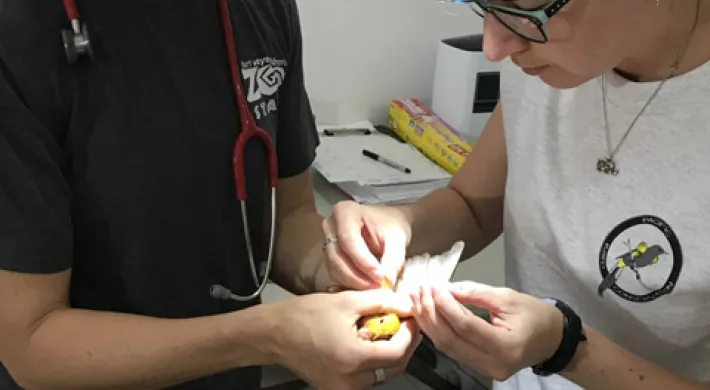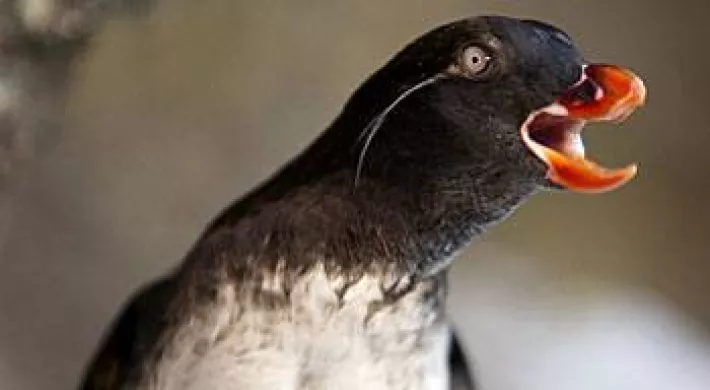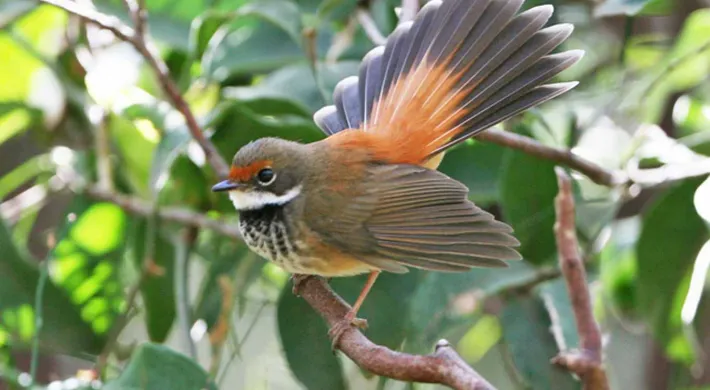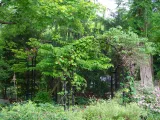Written by Betsy Roznik, Ph.D., Associate Curator of Regional Conservation, North Carolina Zoo
Native birds at the Zoo
As the world’s largest natural habitat zoo, the North Carolina Zoo provides excellent habitat for the animals under our care, as well as native wildlife. Native birds are among the most common wildlife at the Zoo, with more than 100 native bird species observed on Zoo grounds. Some of these birds make their homes at the Zoo year-round, while others are here during part of the year or visit only briefly during spring or fall migration. One way that we care for our native birds is by making sure that our windows are bird-safe.

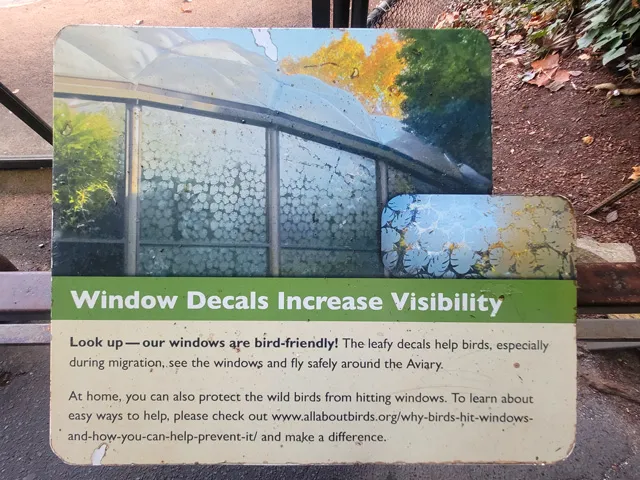
Explanation of the bird strike pattern on the Aviary (pictured above)
Migration—a spectacular but perilous journey
This fall, more than 4 billion migratory birds are traveling from their nesting habitat in North America to their winter habitat in Central and South America. It's an extraordinary journey, but one that many birds will never finish. Birds face many dangers throughout the year, but these are often greatest during migration when birds are tired, hungry, and in unfamiliar areas. Collisions with glass windows are among the largest threats to migrating birds. Unfortunately, more birds die from glass collisions during fall migration than any other time of year. Birds travel long distances, populations are at their largest, and young birds are inexperienced and prone to making mistakes during their first migration.
Collisions with glass—a serious threat
Up to 1 billion birds die from window collisions in the US each year, making this the second largest threat to birds (behind domestic cats). Birds crash into windows during the day and night for different reasons. During the daytime, birds fly into windows because they see reflections of trees or sky or because they see through the windows to potted plants or vegetation on the other side. At night, nocturnal migrants (mostly songbirds) are attracted to artificially lighted windows, especially during inclement weather, where they become disoriented and exhausted and often collide with them.
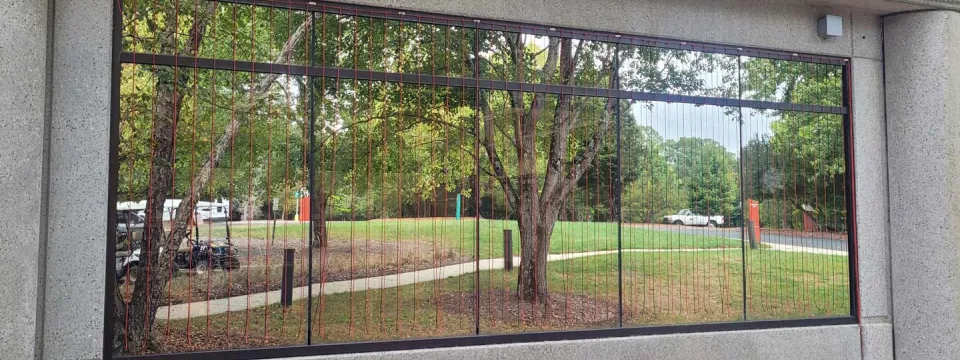
How can we prevent window collisions?
Almost 50% of window collision fatalities occur in residential homes. Therefore, addressing collisions at home makes a huge difference for birds. One important action you can take is to reduce artificial night lighting at your home, both outdoors and indoors. Turn off unnecessary outdoor lights or use motion sensors to minimize bird attraction to buildings. Indoors, use shades or curtains to reduce the amount of interior light that escapes during the night. This also helps warn birds that glass is a barrier during the day.
Breaking up reflections on the entire outer surface of windows is also critical to reducing glass strikes. The North Carolina Zoo has implemented several different solutions that are fairly inexpensive and suitable for use in your home or office. See the examples below:
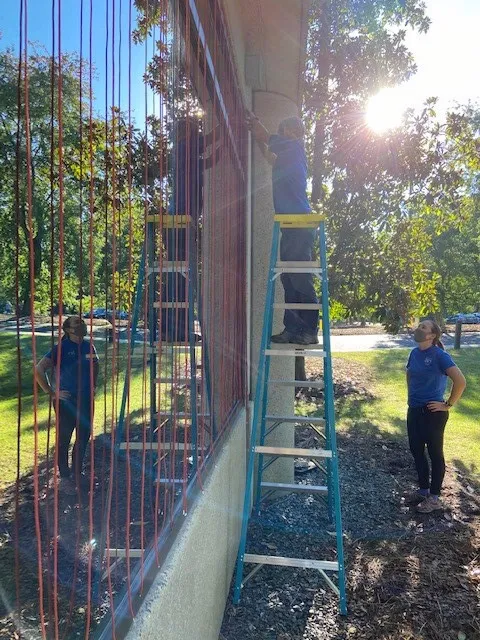
Zen pattern being applied to Stedman Education Building to help prevent bird strikes on the reflective windows
Paint designs on your windows. Apply tempera paint (available at craft stores) freehand with a brush or sponge, or use a stencil. Tempera paint is nontoxic and long-lasting, even in the rain, but is easy to remove with a damp rag. Shown below is a patterned paint roller applied to the Zoo’s Stedman Education Center.
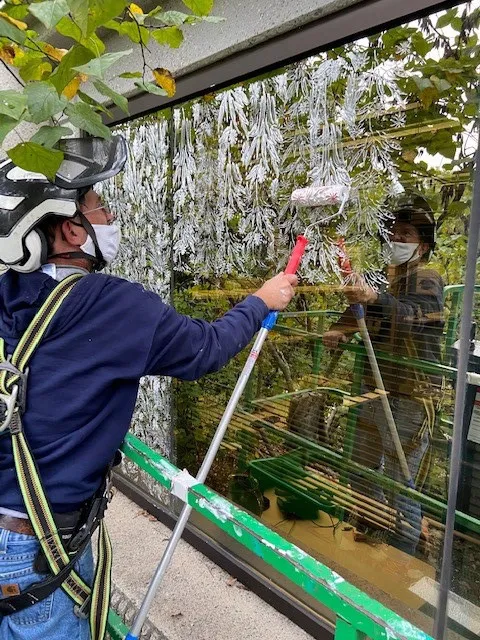
Patterned paint roller being applied to Stedman Education Building

